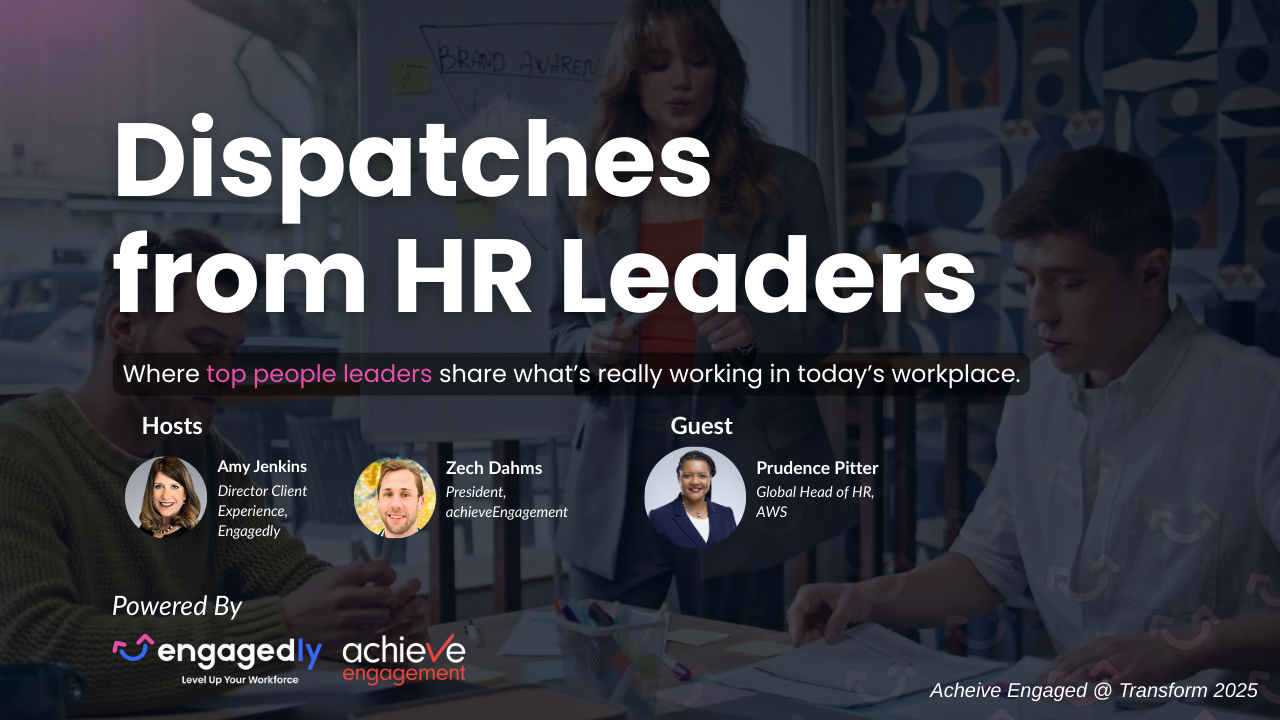At Transform 2025’s People Strategy Leaders Podcast – Transform Dialogues, Prudence Pitter, Global Head of HR at Amazon Web Services, shared her front-row insights into how leaders can balance performance and humanity in the modern workplace. With 28 years in HR and a career dedicated to employee well-being, Pitter offered a candid look at what it takes to build sustainable workplaces that prioritize both business outcomes and people.
Key Takeaways — Prudence Pitter at Transform
- Well-being is strategic — not just healthcare costs, but a driver of engagement and retention.
- Normalize vulnerability — leaders role modeling balance create psychological safety.
- Support must be universal — frontline and corporate employees both face unique challenges.
- HR leaders need HR, too — support systems, accountability, and community prevent burnout.
- The future is personalized well-being — tech will deliver tailored reminders, celebrations, and nudges.
Well-Being as a Strategic Imperative
For Pitter, employee well-being is no longer a “nice to have”—it’s a business-critical lever for engagement, performance, and retention. Today’s employees expect proactive support in areas like diet, exercise, sleep, mental health, and benefits—long before a crisis emerges.
“Well-being is not a destination, it’s a journey,” she explained. To succeed, organizations must normalize resource usage, bridge gaps between frontline and corporate experiences, and embed well-being into the culture.
Breaking the Stigma: Leaders as Role Models
Many employees hesitate to seek help, fearing their struggles aren’t “serious enough.” Pitter argues that leaders can shift this stigma by:
- Sharing when they take time off for personal needs.
- Speaking openly about stress, caregiving, or personal loss.
- Celebrating balance—like prioritizing family or exercise.
By modeling vulnerability, leaders give teams permission to care for themselves. The payoff? A workforce that is more creative, innovative, and productive.
The Balancing Act of Modern Leadership
Today’s leaders face dual pressure: driving high performance while protecting well-being. Pitter warns that “always-on” leaders inevitably burn out. Her antidote:
- Recognize rest as fuel for innovation.
- Share personal resilience strategies.
- Give employees space to disconnect guilt-free.
When well-being becomes part of the culture, performance and trust rise together.
HR for HR: Supporting the Supporters
HR professionals, often caretakers of the organization, risk neglecting their own needs. Pitter emphasized three essentials:
- Support systems — mentors, peers, or accountability partners.
- Mentorship — proactively reaching out to admired leaders.
- Personal discipline — making sleep, exercise, and boundaries non-negotiable.
“HR for HR,” she said, is not optional—it’s survival.
A Bold Prediction: Personalized, Tech-Enabled Well-Being
Looking ahead, Pitter predicts the future of employee well-being will be deeply personalized and technology-driven. That means:
- Reminders customized to individual goals.
- Tailored celebrations, private or public.
- Nudges to prevent burnout before it starts.
Organizations that embrace personalization will foster stronger belonging, engagement, and sustained performance.
Final Thought
For Prudence Pitter, well-being is not a side initiative—it’s a strategic lever for innovation, retention, and business success. Leaders must model balance, employees must feel safe to seek support, and HR must care for its own. The organizations that thrive in the future will be those that make well-being proactive, personalized, and inseparable from their culture.

